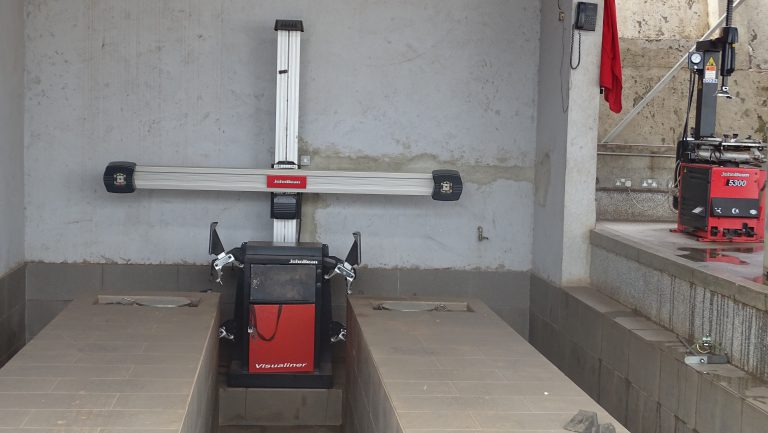Do you need a wheel alignment? Here’s how you can tell.

You’ve just dropped off your car at the shop to have your new tires installed and balanced, when you get a call from your mechanic suggesting a wheel alignment to “protect your new tire investment.” But how do you know you really need that service?
First, a little background is helpful. No matter how advanced, expensive or run-of-the-mill your car is, the wheel alignment (not to be confused with wheel balance) is basically related to three settings:
Toe – front and rear wheels are never adjusted to track perfectly parallel paths. If they were, then you would constantly have to adjust the steering wheel to stay in a straight line. Instead, the front wheels are pointed slightly together or away from each other to provide a solid feel to the steering. The amount of this toe-in or toe-out varies from model to model and is set to tolerances of less than a half-inch.
Camber – this represents the vertical angle of the wheels; with most vehicles, the top of each tire is slanted inward. As with toe settings, this provides a more solid feel to the steering, while giving each tire maximum grip on the road.
Caster – this is commonly referred to as the crouch angle, and it relates to the position of each wheel within the wheel well, as in whether it’s “crouched” forward or rearward.
Of these three, only one – the toe setting – is truly adjustable on most vehicles. The others are factory set and if they’re severely out of tolerance, it means something is bent
Usually the first thing a driver notices when wheel alignment goes awry is a steering pull to either the left or the right. There is a fine line between a steering pull and a normal drift. All roads are crowned in the centre to provide water drainage; the centre line is slightly higher than the outer paved edge. This means if you’re driving in the right lane and let go of the wheel, you will drift to the right. An easy way to test if your vehicle really does have a steering pull (rather than a drift) is to drive on a smooth straight section of an empty parking lot. If the vehicle still pulls to one side, you need to get things checked out.
The second most common symptom of an alignment issue is uneven tire wear. This is also an easy DIY inspection: Crank the steering wheel so that you can easily view the tread faces of the front wheels. If they are worn more on one side than the other, chances are good you have an alignment problem. Don’t forget to check the rear wheels, as many vehicles have steering angle adjustments for them as well.
If you do the above checks and realise you need alignement then the next prudent step is to drive into the Daks Toyota service center and slet the technicians take it from there.


